From a failed housing project in Naples, to brutalism in Albany, some of the world’s most respected architects have taken pen to paper in defense of the buildings the rest of us loathe.
Here’s what they have to say, via T Magazine:
Daniel Libeskind on the Tour Montparnasse in Paris
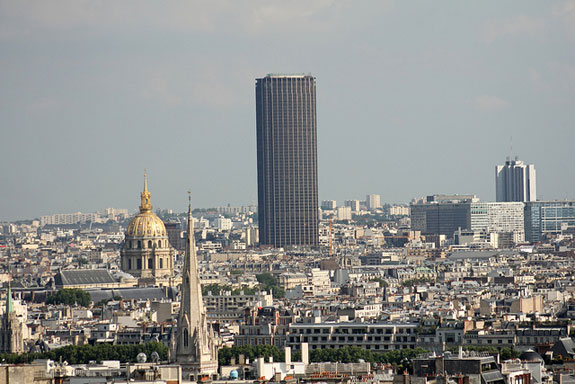
 “It’s legendary for being the most hated building in Paris. I want to defend it not because it’s a particularly beautiful tower, but because of the idea it represents,” Libeskind told T Magazine. “Parisians panicked when they saw it, and when they abandoned the tower they also abandoned the idea of a high-density sustainable city. Because they exiled all future high rises to some far neighborhood like La Défense, they were segregating growth. Parisians reacted aesthetically, as they are wont to do, but they failed to consider the consequences of what it means to be a vital, living city versus a museum city.”
“It’s legendary for being the most hated building in Paris. I want to defend it not because it’s a particularly beautiful tower, but because of the idea it represents,” Libeskind told T Magazine. “Parisians panicked when they saw it, and when they abandoned the tower they also abandoned the idea of a high-density sustainable city. Because they exiled all future high rises to some far neighborhood like La Défense, they were segregating growth. Parisians reacted aesthetically, as they are wont to do, but they failed to consider the consequences of what it means to be a vital, living city versus a museum city.”
Zaha Hadid on the Orange County Government Center in Goshen, N.Y.

 “The 1960s were a remarkable moment of social reform. The ideas of change, liberation and freedom were critical. Now people think public buildings should be more flowery, but these were times when people did tough projects,” Hadid wrote. “As a center for civic governance, it enacted democracy through spatial integration, not through the separation of elected representatives from their constituents.”
“The 1960s were a remarkable moment of social reform. The ideas of change, liberation and freedom were critical. Now people think public buildings should be more flowery, but these were times when people did tough projects,” Hadid wrote. “As a center for civic governance, it enacted democracy through spatial integration, not through the separation of elected representatives from their constituents.”
Ada Tolla on Vele Di Scampia in Naples, Italy
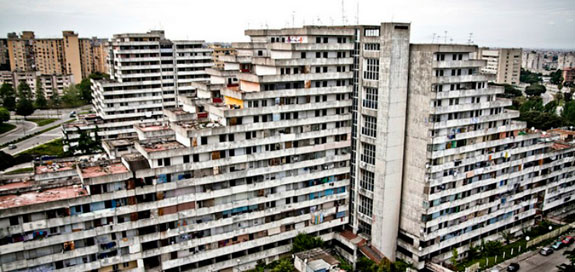
 “If somebody put this complex in front of me right now without adding any context, any history, I would consider it a really strong piece of architecture. They are iconic buildings that embed the Modernist idea of the right to a home — a home for everyone,” Tolla said. “But the complex was cursed. It wasn’t built as specified; value-engineering changed the structure and reduced the interior courtyards, therefore limiting the amount of light. None of the planned public spaces, amenities, schools or offices were ever constructed. The buildings were squatted even before completion. The Camorra installed gates and blocked the police from entering. For me it is important to recognize that the Vele is not a failure of the architecture, but rather a failure in execution and management.”
“If somebody put this complex in front of me right now without adding any context, any history, I would consider it a really strong piece of architecture. They are iconic buildings that embed the Modernist idea of the right to a home — a home for everyone,” Tolla said. “But the complex was cursed. It wasn’t built as specified; value-engineering changed the structure and reduced the interior courtyards, therefore limiting the amount of light. None of the planned public spaces, amenities, schools or offices were ever constructed. The buildings were squatted even before completion. The Camorra installed gates and blocked the police from entering. For me it is important to recognize that the Vele is not a failure of the architecture, but rather a failure in execution and management.”
Norman Foster on Tempelhof Airport in Berlin
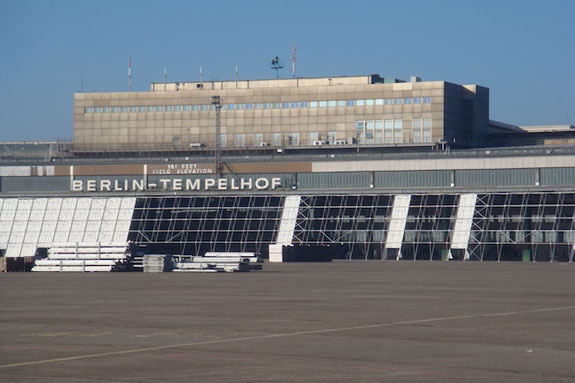
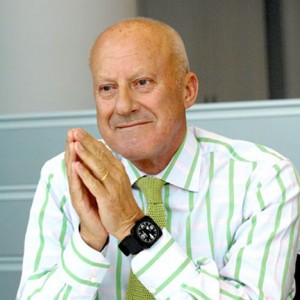 “Tempelhof is one of the really great buildings of the modern age, and yet it is inevitable that it is not necessarily celebrated by everyone. Its architect, Ernst Sagebiel, studied under the Jewish master Erich Mendelsohn but later served the Nazis,” Foster explained. “It was adjacent to a concentration camp that held journalists, politicians, Jews and other so-called ‘undesirables,’ so it is redolent with all the most negative associations. Like a pendulum, it served the purposes of the fascist regime and then became a lifeline with the airlifts of 1948 and 1949 that delivered food to the people of West Berlin. The airport is full of contradictions and paradoxes. It has an austere facade, which is not so fascist, and could almost appear in Sweden. The back is a sweeping, cantilevered curve. It soars. If you were transported there and were to walk under that cantilever, you would be awestruck.”
“Tempelhof is one of the really great buildings of the modern age, and yet it is inevitable that it is not necessarily celebrated by everyone. Its architect, Ernst Sagebiel, studied under the Jewish master Erich Mendelsohn but later served the Nazis,” Foster explained. “It was adjacent to a concentration camp that held journalists, politicians, Jews and other so-called ‘undesirables,’ so it is redolent with all the most negative associations. Like a pendulum, it served the purposes of the fascist regime and then became a lifeline with the airlifts of 1948 and 1949 that delivered food to the people of West Berlin. The airport is full of contradictions and paradoxes. It has an austere facade, which is not so fascist, and could almost appear in Sweden. The back is a sweeping, cantilevered curve. It soars. If you were transported there and were to walk under that cantilever, you would be awestruck.”
Annabelle Selldorf On The Empire State Plaza, Albany
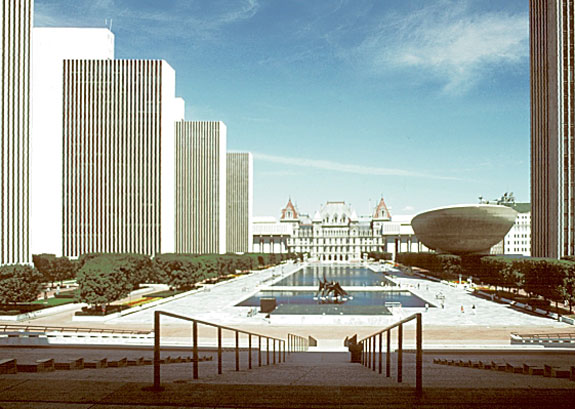
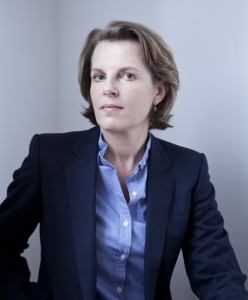
Annabelle Selldorf
“Against my better judgment, I like this complex. It’s sculptural, architectural abstraction to the extreme. At a distance, the scale of the skyline exudes a sense of identity and strength for Albany, while at The Pedestrian Level The Plaza plays an important role in the community,” Selldorf said. “I know that others find it too brutal or forbidding, but I think it’s beautiful in its monumentality and starkness.”
[TM] — Christopher Cameron
